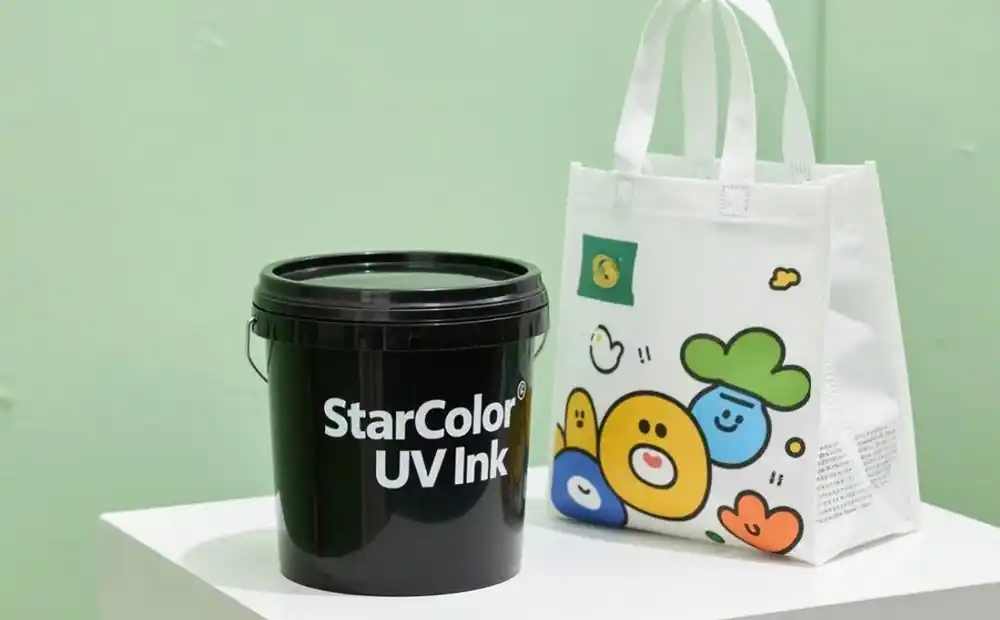UV Flexo Inks vs. Traditional Inks: Which Offers Better Scratch Resistance?
Date: Jul 10 2025 From: Star Color Views:
Scratch resistance of printed packaging is a key indicator of printing quality and durability. Especially for high-end packaging, transparent films, and printed materials requiring post-processing, easily peeling, scratching, or fading inks will directly affect product appearance and brand image.
So, between UV Flexo Inks and traditional inks (such as solvent-based, oil-based, or water-based inks), which one has better scratch resistance? This article will conduct a comparative analysis from a technical perspective to provide professional references for industry practitioners.
What is Scratch Resistance?
Scratch resistance refers to the ability of dried printing inks to resist external physical actions such as mechanical friction, nail scraping, and transportation contact. The better the scratch resistance, the less likely the printed matter is to fade, peel, or get scratched, which is crucial for ensuring the aesthetics and information integrity of products during circulation and use.

I. Scratch Resistance Advantages of UV Flexo Inks
1. Dense Ink Film Formed by UV Curing
The curing principle of UV flexo inks determines the superiority of their ink films. Through ultraviolet irradiation, they can instantly complete polymerization reactions to form a highly cross-linked ink layer. This cross-linked structure, like a tight network, endows the ink film with excellent surface hardness and toughness, fundamentally greatly improving scratch resistance. In label and packaging printing, such dense ink films can effectively resist various frictions and scratches.
2. High Surface Hardness
Surface hardness is an important parameter for measuring ink scratch resistance. The surface hardness of UV ink films can usually reach 2H–3H or even higher, while traditional inks are usually only at B–H levels. The higher the hardness, the less likely the ink layer is to be scratched, enabling printed matter using UV flexo inks to better maintain their original appearance during daily use and transportation, especially suitable for high-end packaging with high surface quality requirements.
3. Excellent Solvent and Chemical Resistance
In practical applications, many scratch damages are not purely physical actions but also accompanied by contact with chemicals such as alcohol and detergents, such as daily chemical product packaging during use. Starcolor's UV ink formulations can enhance alcohol resistance (to be specified), detergent resistance, and wear resistance, ensuring that printed graphics remain stable throughout the packaging life cycle, further highlighting their advantages in scratch resistance.
II. Scratch Resistance Characteristics of Traditional Inks
1. Ink Film Looseness Caused by Drying Methods
Traditional solvent-based or water-based flexo inks rely on volatilization or penetration for drying, rather than cross-linking reactions. This drying method makes the ink film structure relatively loose, like a pile of stacked particles, with low surface hardness, which is easy to be scratched during transportation or use. In packaging printing, such ink films are difficult to withstand frequent friction and collision.
2. Long Surface Drying Time Increases Damage Risk
Traditional inks have a long drying time, which is an obvious shortcoming in printing production. If printed products enter the next process without full drying, quality problems such as scratches and ink peeling are prone to occur. For label and packaging printing enterprises needing efficient production, this not only affects product quality but may also delay production schedules.
3. Dependence on Lamination or Varnishing for Enhanced Protection
To improve scratch resistance, traditional inks often need to be used with varnishes or lamination. This not only increases production processes, prolongs the production cycle but also raises costs and energy consumption.
III. Conclusion of Actual Measurement Comparison
| Performance Indicators |
UV Flexo Inks |
Traditional Inks (Solvent / Water-based) |
| Drying Method |
UV curing (instant drying) |
Hot air or natural drying |
| Ink Film Structure |
Highly cross-linked, dense |
Non-cross-linked, relatively loose |
| Surface Hardness |
High (2H–3H) |
Low (B–H) |
| Scratch Resistance |
Strong (wear-resistant, nail-resistant) |
Moderate or weak |
| Need for Additional Protective Layer |
Can be without lamination or varnishing |
It is recommended to apply varnish or lamination |
Through the above actual measurement comparison, it can be clearly seen that UV flexo inks show significant advantages in various performance indicators related to scratch resistance.
IV. Application Suggestions
UV Flexo Inks are Preferred for High Scratch Resistance Requirements
For application scenarios with high scratch resistance requirements: such as daily chemical bottle labels, logistics labels, wine labels, outdoor stickers, etc., Starcolor UV flexo inks are recommended. In these scenarios, printed matter needs to withstand frequent touch, friction, and various environmental factors, and the high scratch resistance of UV flexo inks can ensure the integrity and aesthetics of printed graphics.
Optimization Scheme for Traditional Ink Processes
For customers using traditional ink processes: if it is temporarily impossible to switch to UV printing, enhanced water-based inks can be selected together with wear-resistant varnishes to improve overall performance. Although this method cannot fully achieve the scratch resistance effect of UV flexo inks, it can to a certain extent improve the scratch resistance of traditional inks, meeting the printing needs of some applications with not extremely high scratch resistance requirements.
In conclusion, in the label, packaging, and daily chemical product printing industries, from the perspective of scratch resistance, UV flexo inks have more advantages compared with traditional inks and are ideal choices for pursuing high-quality printed matter.
 RU
RU
 EN
EN
 CN
CN

